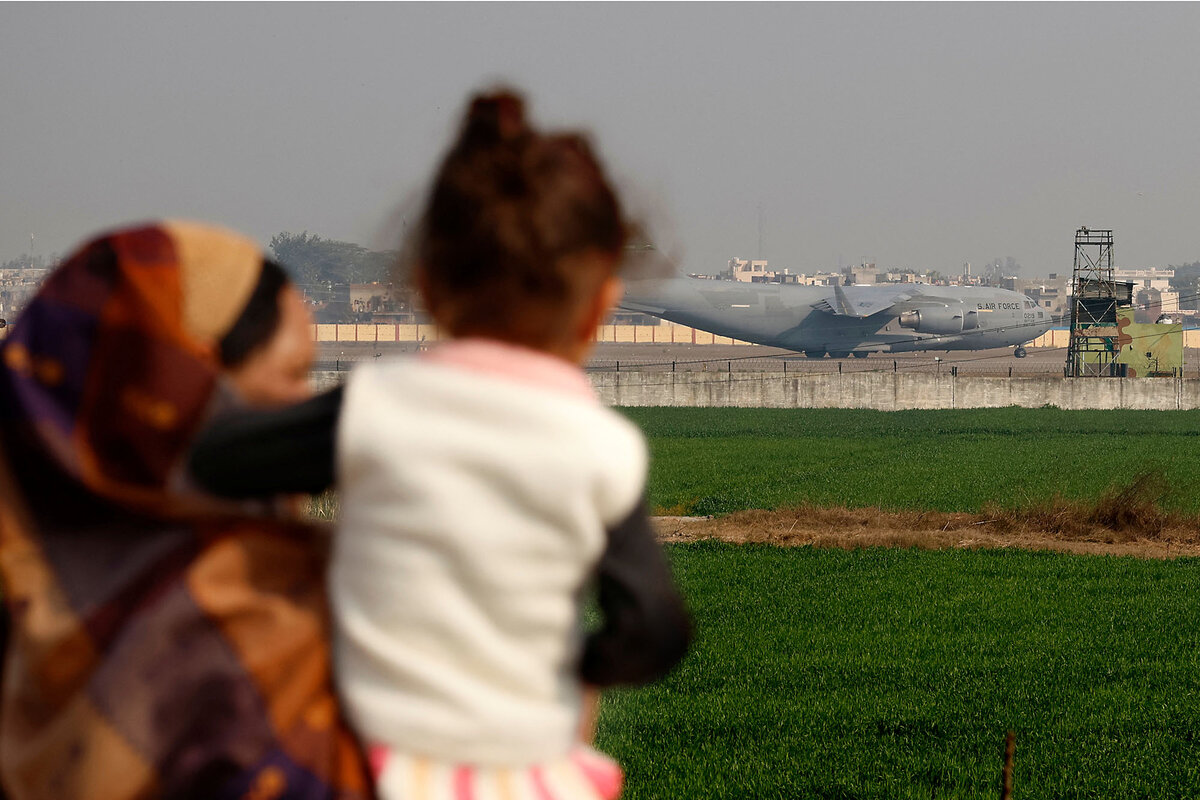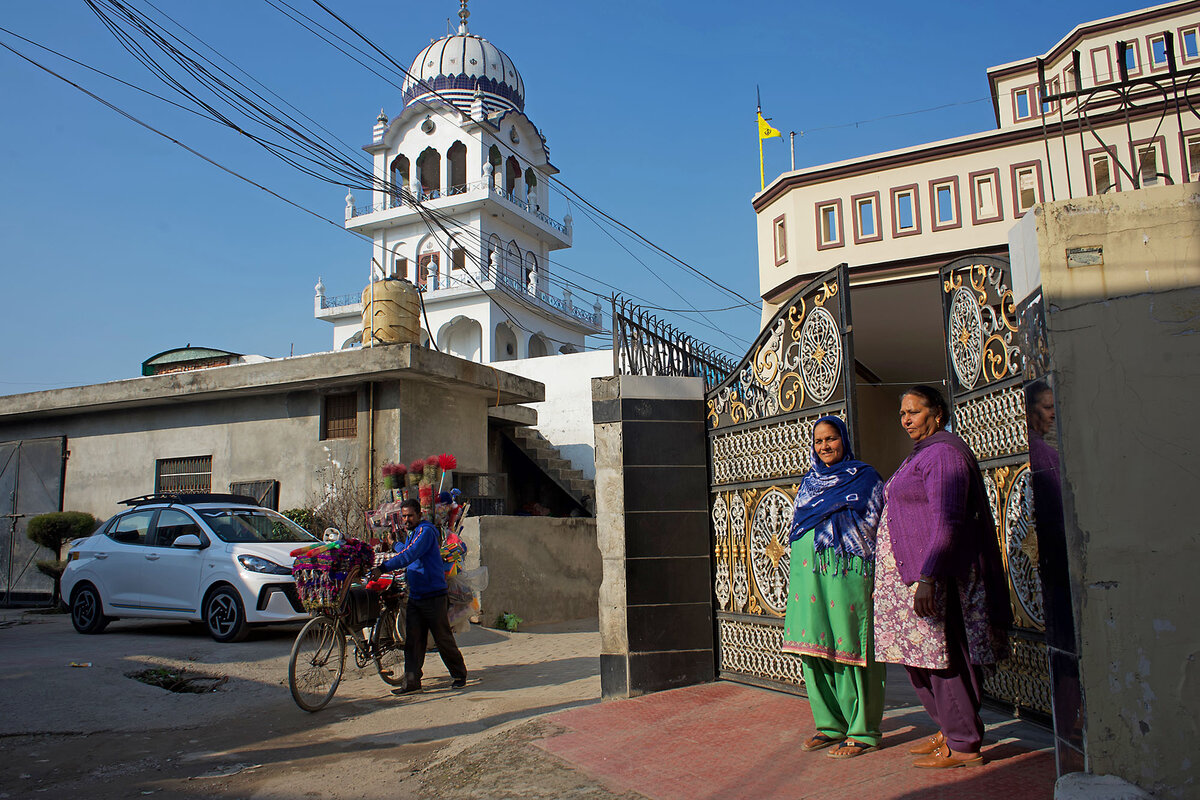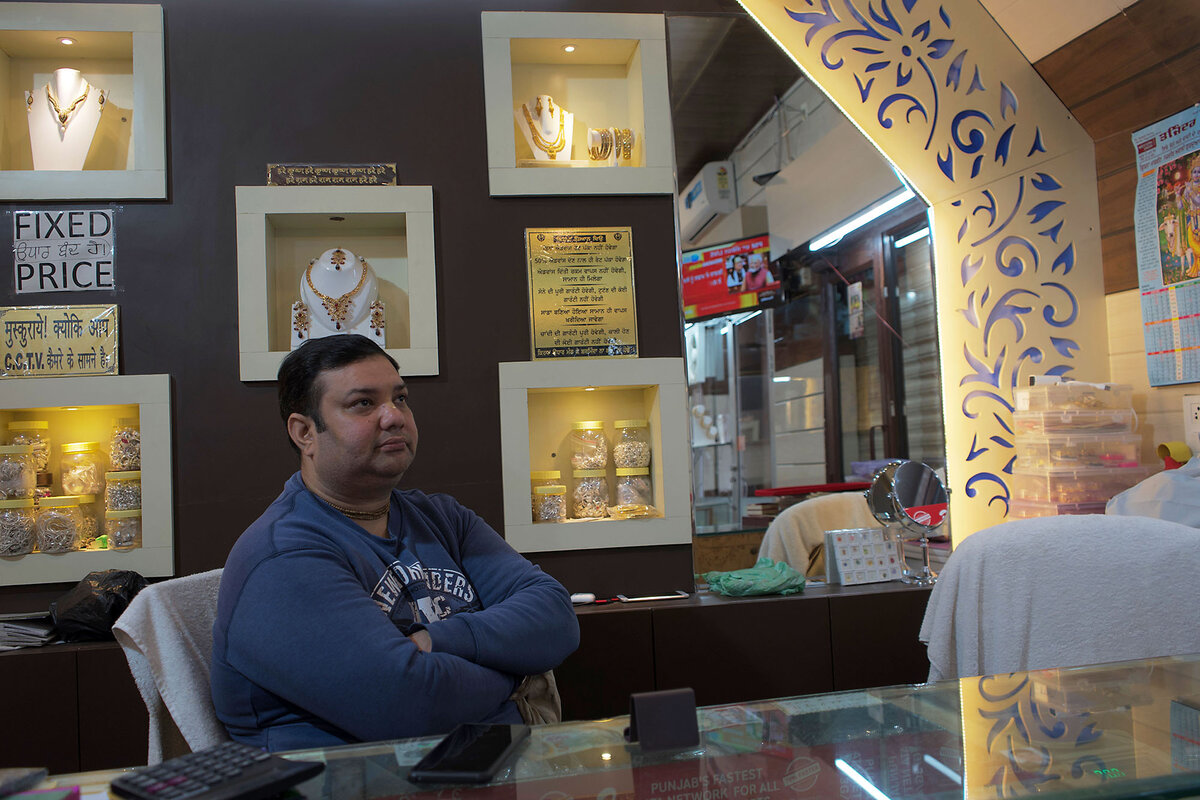Immigration built this Punjab village into a ‘mini US.’ But has it led to a good life?
Loading...
| Gilzian, India
A narrow road through blooming yellow mustard fields and wheat paddies reveals a cluster of terraced double-story houses, their bright white facades contrasting with colorful compound walls. But behind their padlocked metal gates, there is mostly silence.
Half of the village’s houses are deserted, their inhabitants having migrated long ago to the United States. The village, called Gilzian, is known locally as “Mini U.S.”
So as Prime Minister Narendra Modi arrives in Washington Wednesday to discuss, among other issues, immigration, Gilzian’s residents are watching closely. President Donald Trump has promised to deport historic numbers of unauthorized immigrants over the next four years, and while Mexico and other Latin American countries have dominated media coverage of immigration, Indians make up the third-largest group of unauthorized immigrants to the U.S., at least according to recent Pew Research Center estimates.
Why We Wrote This
The Indian government has signaled a willingness to cooperate with the Trump administration on the deportation of unauthorized immigrants, threatening to disrupt the lives of thousands of Indians. In one village, where U.S. migration has led to both prosperity and loneliness, locals must reconsider what makes a good life.
Just last week, Gilzian watched as the first plane of Indian deportees landed in the nearby city of Amritsar. It was a somber day here in “Mini U.S.,” but America’s deportation policy is also forcing locals to reconsider what it means to have a good life, and how to achieve it.
“It was heartbreaking to see Indians handcuffed and deported back on a U.S. Air Force plane,” says Malkeet Singh, who left Gilzian in 1979, eventually settling in New York in 1994. He returned to the village last year to retire, but his two sons still live in the U.S.
“The people who try to migrate through the U.S. have to endure a lot of hardships,” he says. “They often have to sell their land, take loans, and mortgage their houses. They do all of this for their American dream: to live the best possible life.”
Based on local census data, an estimated 95% of the people who migrated out of Gilzian are now living in the U.S., says the elected village head Sukhwinder Singh. (None of the Singhs in this story are related.)
The money they send back to Gilzian has transformed what was once a “sleepy, dusty hamlet of mud houses to sprawling mansions and paved roads,” adds Mr. Singh, cruising through the village in his white SUV.
When India-U.S. immigration makes the news, it’s often in relation to the highly coveted H-1B visas, of which Indian nationals are the primary recipients, mostly for science or technology fields. But that’s not the full picture. In Gilzian and beyond, generations of Indians have followed their own, often winding paths to the U.S.
Sheesha Singh was among the first wave of people who left Gilzian for “the American dream.” It was 1977, and his first stop was Kabul, Afghanistan. After a few years doing odd jobs, he eventually made it as far as what was then East Germany before he was detained by police and deported back to India.
But his “heart was still dreaming for the U.S.,” he says. In 1985, he again ventured on a similar route and reached the U.S.-Mexico border in five months. He settled in New York as a taxi driver. When he got U.S. citizenship in 1996 his family joined him.
Once a year, Mr. Singh visits Gilzian, where he has built a big double-story house with eight bedrooms, but finds it “boring” and “dull” with hardly anyone to interact with. All his relatives and friends are settled throughout the U.S.
Indeed, decades of migration have led to loneliness in the village.
Charanjeet Kaur, whose two sons are living in the U.S., says that when a child is born in Gilzian their mother prays for them to reach the U.S., and when they make it, she prays for them to acquire their resident documents. “When they ultimately settle down in the U.S., mothers then keep praying for their return,” she says. “But most people do not return.”
If anything, immigration seems to be growing. Pew Research Center data shows the estimated population of unauthorized Indian immigrants in the U.S. increasing from 325,000 in 2007 (when the overall unauthorized immigrant population peaked) to 725,000 in 2022.
Even Mr. Singh, the former cab driver who became a U.S. citizen in the ’90s, feels that India-U.S. migration has gotten out of control, with young Gilzian residents coaching each other on taking what’s sometimes called the “Dunki route” – a multi-country journey named after a local idiom meaning “to hop from place to place.”
“People are spending huge amounts [of money] on the Dunki route,” says Mr. Singh. “It has become a kind of culture.”
This money could instead be spent within India to create different job opportunities – and fill Gilzian’s empty houses.
But “living life in the U.S. ... also makes people feel superior and important than those living back in India,” says Mr. Singh. “It comes with the status of being a resident of the world’s most powerful nation.”
Indian migration expert Professor S. Irudaya Rajan, of the International Institute of Migration & Development, in Kerala, shares this concern.
“People want to make quick money, become rich, and that is why they are spending huge sums to reach the U.S.,” says Professor Rajan. “If they invest that much money in India, they will not only get a good job but also create job opportunities for others.”
Yet many villagers say they’re chasing an overall quality of life that only the U.S. can provide – even if it takes years to get there.
Kulbeer Singh, an 18-year-old who has taken a $30,000 loan and mortgaged agricultural land to move to the U.S. through the Dunki route, says he feels frustrated by Mr. Trump’s immigration policy. He’s currently planning to ride out the next four years in a European country, assuming he can find work.
“His [President Trump’s] term will be over by then,” he says, “and hopefully the new president of the U.S. will have an easy policy on migration.”









